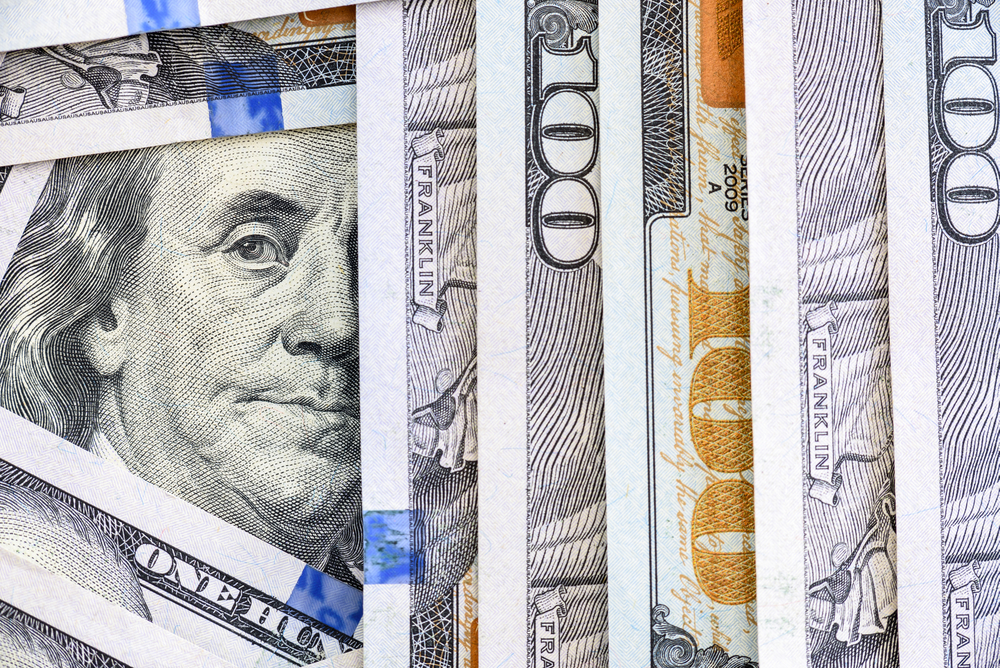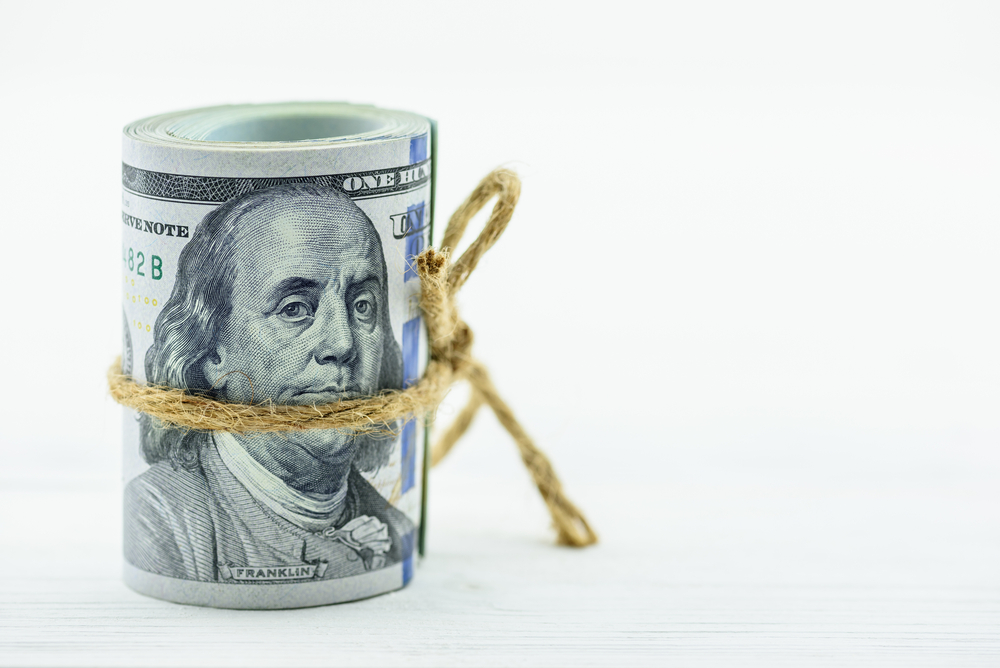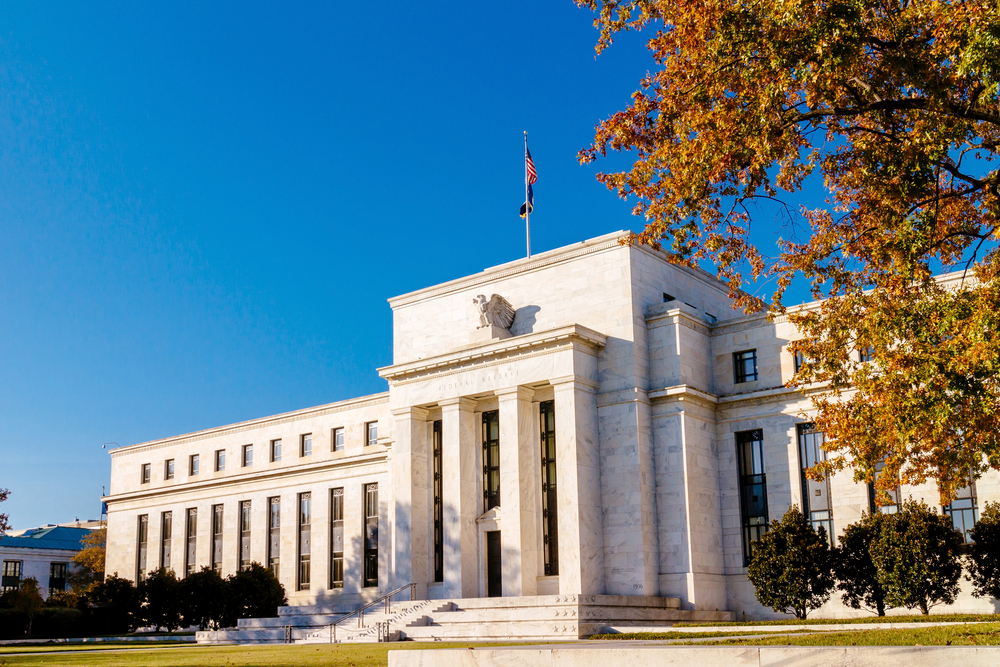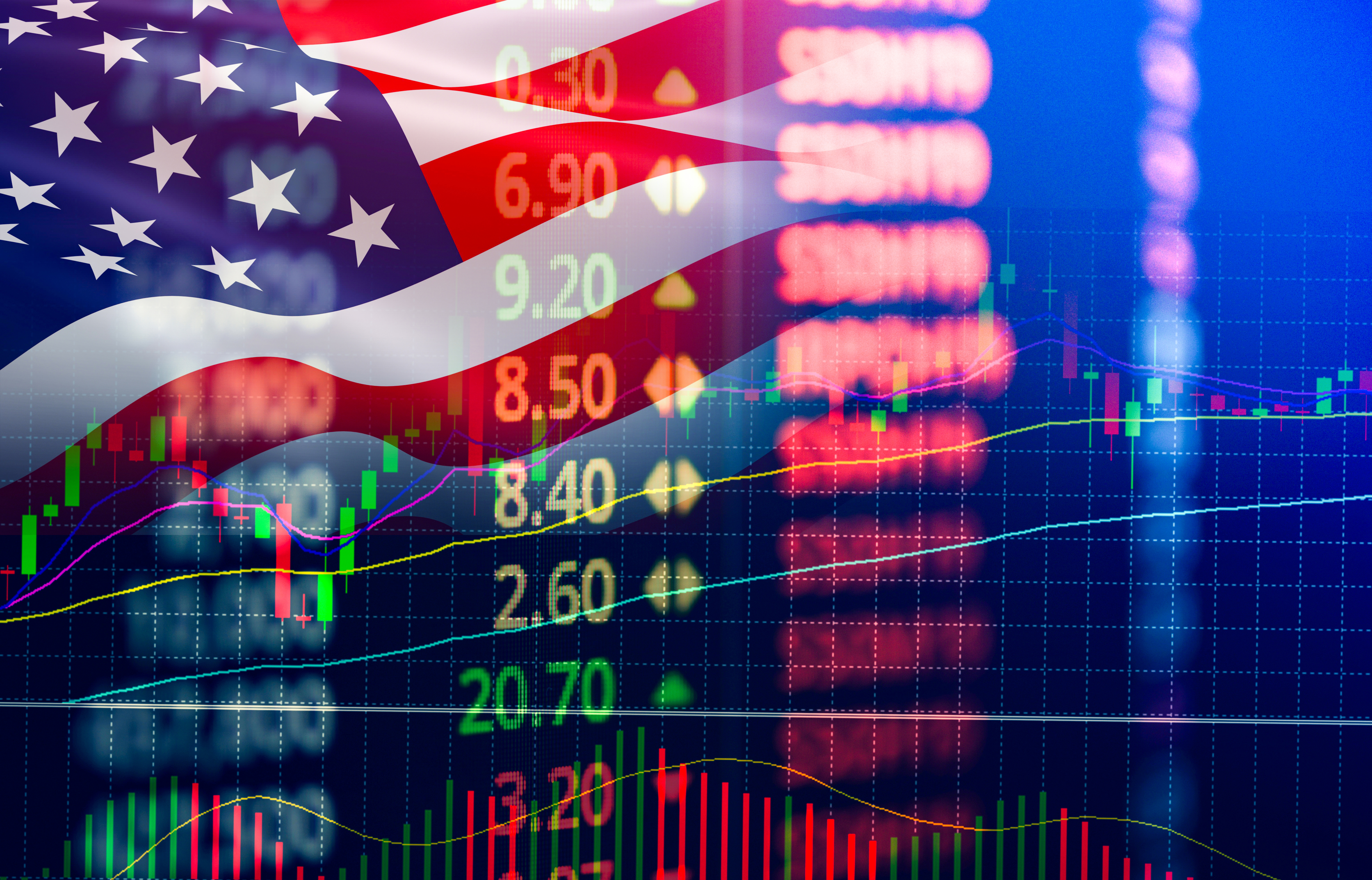Vaccination Campaign: When Will the Economic Recovery Begin?
After 2020, in which the financial markets faced with the Black Swan effect, the optimism of the vaccination campaign started to spread all over the world. Increased risk appetite, combined with the possibility of abundant liquidity, especially in financial markets where expectations are priced, pushed many asset prices well above their value. But although 'positive scenarios' are purchased by investor, questions about when the economic recovery will begin and become apparent have not been answered yet.
In addition to the ultra-loose monetary policies implemented by the central banks of developed and developing countries in the early stages of the pandemic in order to minimize the economic damage, the strong expansion of financial authorities created an abundance of low-cost liquidity globally.– According to Bank of America, there is low-cost liquidity close to $ 20 trillion - Especially in the 3rd quarter of 2020, the economies opened after the first wave of the pandemic was taken under control, prepared the environment for the recovery of investor sentiment and the start of an upward rally in asset prices. But the 2nd wave, which started globally as of the autumn period, has put off the economic recovery and put pressure on investor risk appetite.
After the 2nd quarter of 2020, when the effects of the outbreak got intense, the developed and developing economies, which rebounded strongly in the 3rd quarter, indicating V-type growth, diverged into the new wave of the pandemic in the last quarter.
In Europe, which has become the center of the 2nd wave of the pandemic, many countries are going to close again, while some developing countries that experienced the cumulative state of the first wave have resorted to limited measures. The United States and Brazil eased the outbreak measures. Beyond all that, while a fairly limited number of cases have been identified in China, where coronavirus was first identified, the public relations have almost returned to normal.
The vaccination campaign,which began after 2020 is one of the new scenarios of optimism. The United States, the world's largest economy, and Britain, which has withdrawn from the Eurozone, are moving ahead with a big vaccination schedule.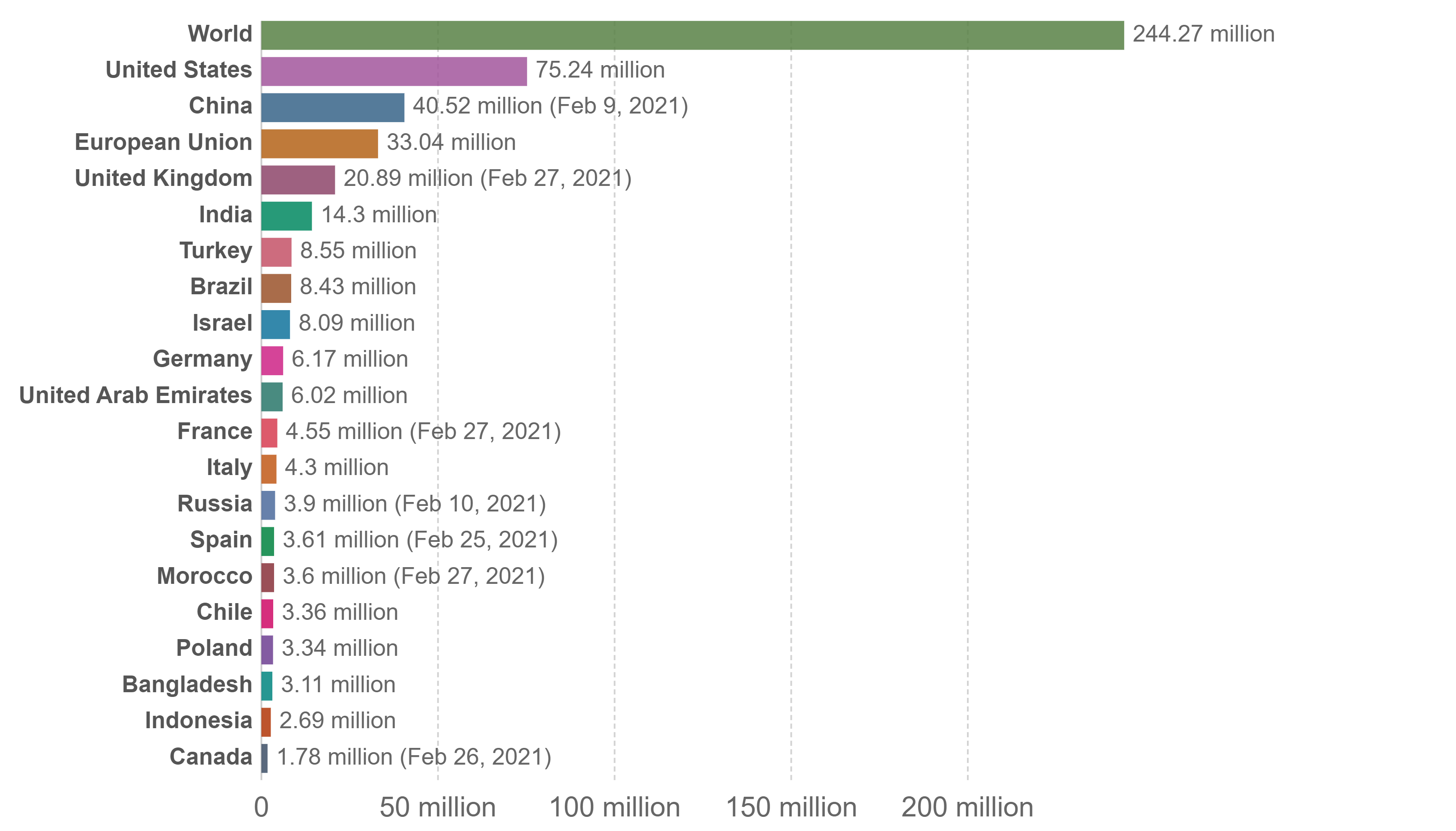
According to data compiled by Ourworldindata, more than 244 million vaccinations have been carried out globally. More than 75 million people have been vaccinated in the US, which accelerated the campaign with the new administration, while 40 million in China and 33 million in the Eurozone have been vaccinated. In the UK, more than 20 million have been vaccinated.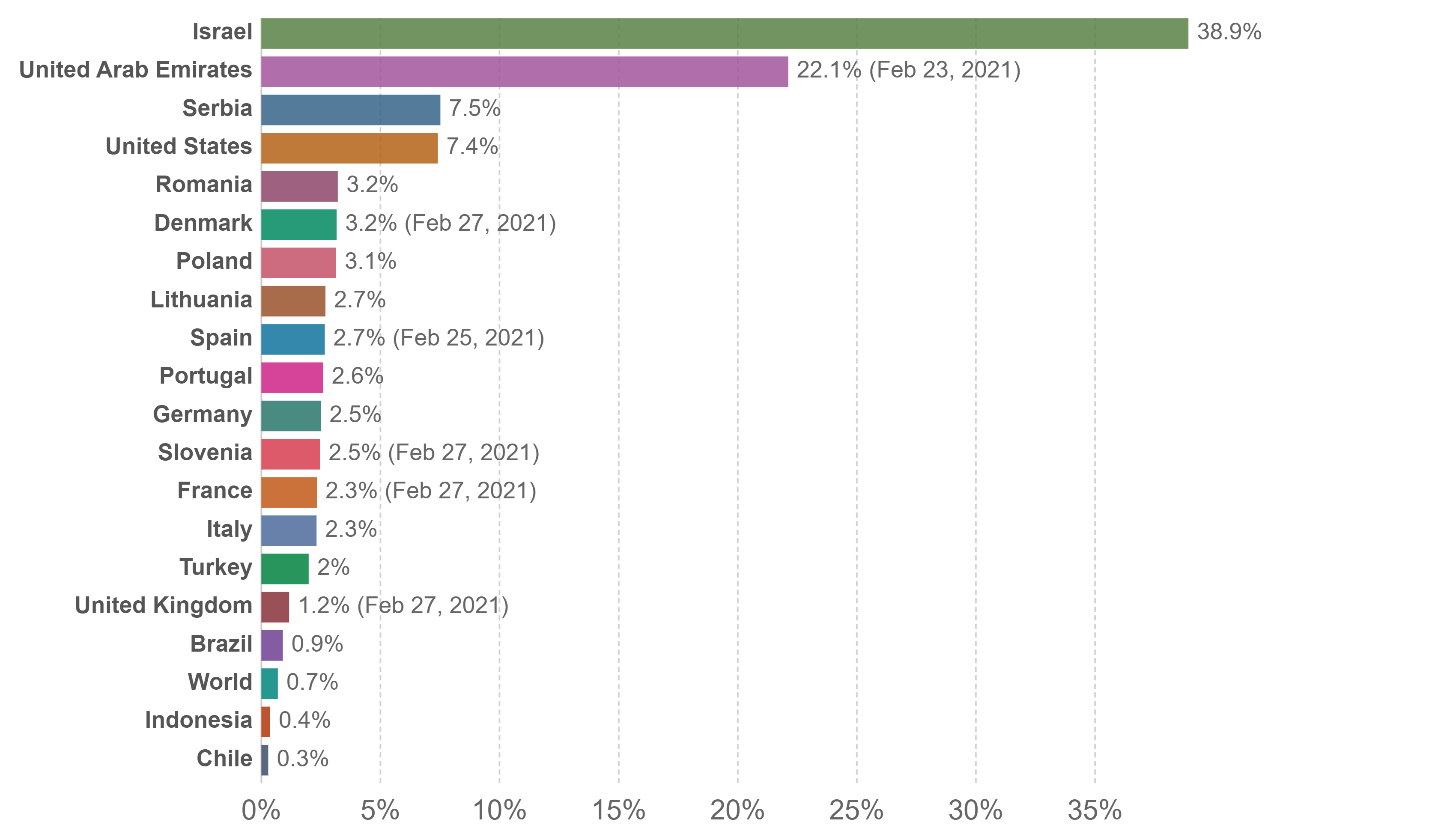
Meanwhile, 38.9 percent of the total population has been vaccinated so far in Israel, 22.1 percent in the United Arab Emirates, 7.5 percent in Serbia, 7.4 percent in Britain and 3.2 percent in Romania. But there are countries where the vaccination calendar has never started, even though it is conducted globally on a large scale.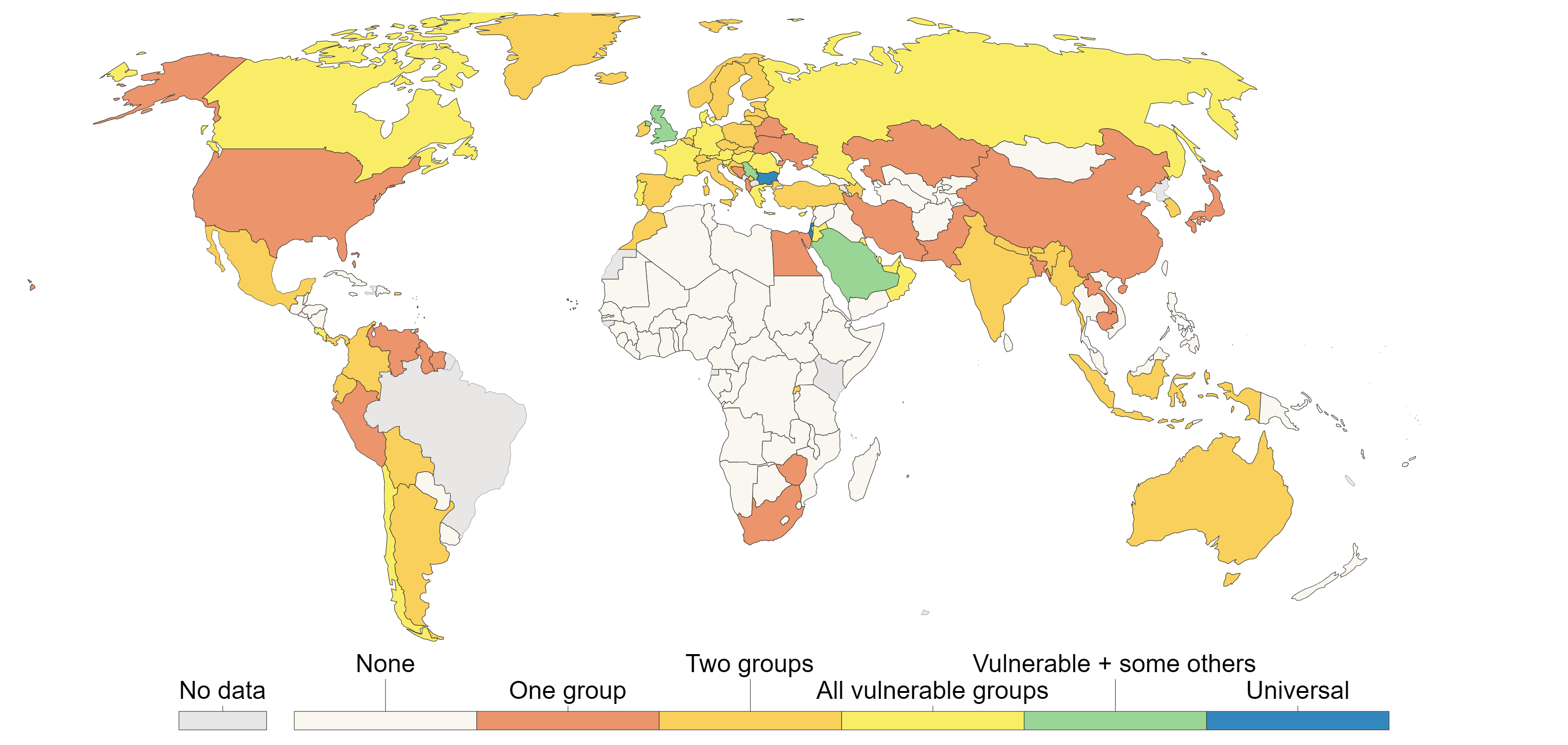
At this point, the vaccination schedule of developed countries continues rapidly, while under the shadow of developing countries that have fallen behind, it is known that the calendar has never started in many countries. In particular, the supply of vaccines and the financial situation of countries play a decisive role in this regard.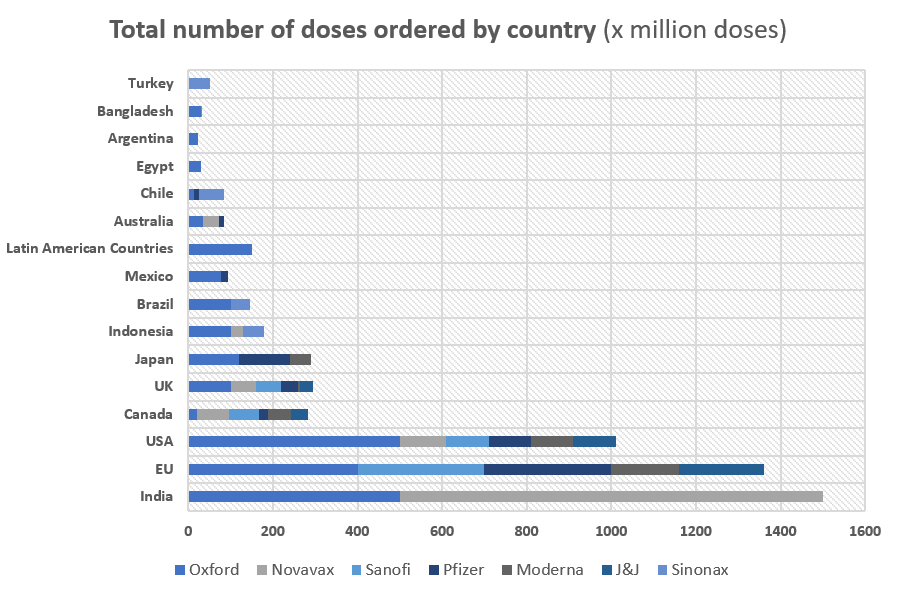
A study carried out by the Center for Global Health Innovation found that India is among the countries that order the largest number of vaccines due to its dense population, while countries with strong economies such as the European Union, the United States, Canada and the United Kingdom increase vaccine orders and diversity. Again, the study found that rich countries, which host only 14 percent of the world's population, currently ordered 53 percent of promising vaccines.
According to Nature.com data, Canada is the world leader in vaccine contracts per capita. Canada, which signed a contract of 9 doses per person, was followed by the United States at a rate of 8 doses, the United Kingdom at a rate of 6 doses and Australia at a level of 5 doses.
The vaccine justice organization, known here as Covax, has managed to secure the distribution of 700 million doses of the vaccine to the 92 lowest-income countries. Ghana was the first country to receive the vaccine from the Covax program. However, Amnesty International, Oxfam, and Global Justice Now organizations, including the People's Vaccine Alliance, point out that there is not enough vaccine for the population of poor countries.
Behind Israel and Saudi Arabia, which appear to complete the campaign the fastest, the US and UK will begin normalisation more quickly compared to other developed and developing countries, and we expect these economies to recover faster compared to others. In addition, statements made in these countries include plans to complete vaccination in the summer.
But despite this plan, even in countries at the top of the vaccine chart, it seems that a complete recovery will not be possible. Here, the main reason can be considered as the weak foreign demand. Although the accumulated demand within its borders will quickly come into play with the planned normalization in these countries, given that normalization has not yet been switched to in countries that have not started vaccination, it may be assumed that export and import activities will continue to be limited due to weak external demand. In other words, weak external demand is a major obstacle to the return of the manufacturing and non-manufacturing (service, construction) sectors, which are the locomotive sectors of the economy, to the levels before pandemic. In addition, it is clear that continuing the activities of the tourism and aviation sectors, most affected by the pandemic, can cause new mutations as can be seen in the examples of the UK and South Africa and make it impossible to reduce the number of cases within their borders to zero.
From this point of view, in addition to the fact that new variants that may threaten the effectiveness of existing vaccines, a country that is not vaccinated will pay a significant economic bill to recover its economic activities to the levels before pandemic, even if it has vaccinated its own population. Due to the disruptions in the global supply chains, countries with strong economies that vaccinate at a rate that will create the immunity of their society, financial support to the COVAX type partnerships established to accelerate the global vaccination is of great national interest. In this regard, it is impossible to talk about economic normalization without moving the coronavirus pandemic, which caused the biggest economic crisis since the Great World Depression of 1929, to a dimension that would not threaten public health globally.
Even in countries that have completed the vaccination campaign within their borders, it can be predicted that the 3rd quarter will not be any recovery since there will be no recovery without ensuring a global immunity. Considering that AstraZeneca, Pfizer and Moderna could produce vaccines for 2.6 to 3.1 billion people by the end of 2021, and Gamaleya in Russia could produce vaccines for 500 million people and that the world population is more than 7.5 billion, it will not be possible to make 60% of the world vaccinated by 2023 or 2024. Thus, a significant economic recovery will not be possible soon. It is also worth noting that the sharply affected labor market and income balance will not be able to fully recover soon, even if the vaccination period is completed for the whole world.


